What makes someone beautiful? Some attributes, like bright eyes and a winning smile, will always be considered beautiful in a person, but there are dark marks in history where beauty was intimately linked to pain. One such practice, maybe the most painful of them all, was foot binding.
Foot binding was a centuries-old Chinese tradition that involved the painful deformation of women’s feet using tight bindings and the breaking of bones. This practice would begin in childhood, and by the time the women were adults, their feet would be forever deformed, sometimes to the point of only being three inches long.
Here we will unravel the reasons behind this ancient practice, why society demanded it of so many women, and how foot binding eventually fell out of favor.
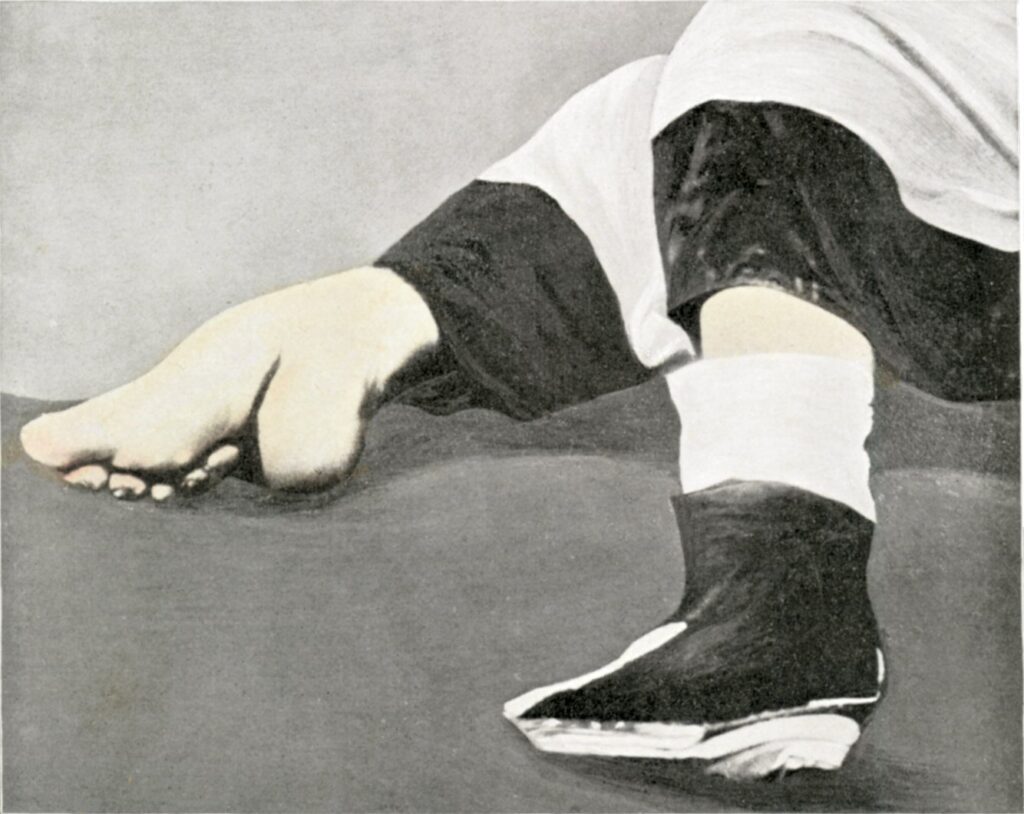
The Painful Legacy of Foot Binding
Now that foot binding is no longer practiced, it’s difficult to understand just how difficult and transformative the practice was. Women who underwent foot binding would be changed for life.
They would lose the ability to walk unassisted. They were unable to work or even socialize outside the home, and the pain from the procedure could linger for years, if not a lifetime.
Foot binding was meant to make a woman appear more delicate. The hobbled, swaying walk the bound feet would force on a woman was considered attractive.
This expectation led women of all classes to begin binding their feet and the feet of their daughters to make them more attractive for marriage. But at what cost?
What Was Foot Binding, and How Was it Done?
Foot binding has always been a distinctly Chinese practice, and no other culture has ever practiced it. The roots of foot binding go back to the 10th century during the Five Dynasties and Ten Kingdoms period in China.
During that time, Emperor Li Yu watched his concubine Yiao Niang perform a swaying dance upon a lotus flower he had built. The Emperor was utterly captivated.
It was during this dance that the link between the lotus flower and foot binding would be made. This explains why the broken and bound feet of Chinese women would be called “lotus feet”.
What Was the Purpose of Foot Binding?
When the tiny “lotus feet” came into fashion initially, foot binding was practiced almost exclusively by the elite. Foot binding was traumatic and drastically affected the way a woman could walk, and it was not ideal for families where the women needed to work.
Higher-class women were able to live sedentary, pampered lifestyles, so they were never required to engage in physical labor. Because of this, foot binding would become a status symbol reinforcing the idea that a woman’s worth lay in their physical beauty and that higher-class women were superior to the lower class.
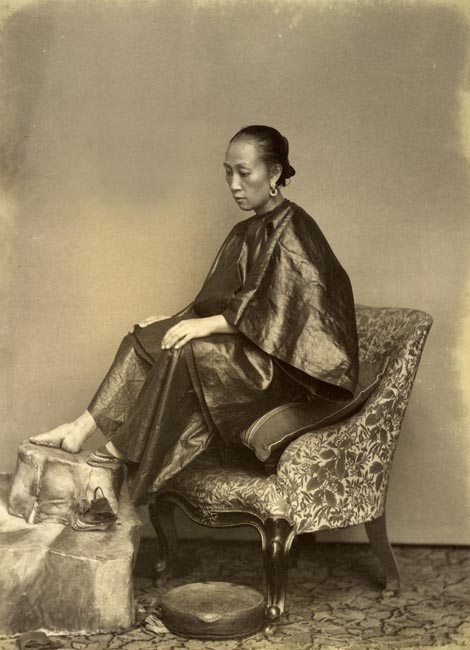
Foot binding wasn’t just a physical ordeal, though. It had intense societal influence–a woman with lotus feet was seen as the epitome of feminine beauty and grace.
Not only that, but a woman with bound feet was also considered virtuous, delicate, refined, and a high-value candidate for marriage.
On the other hand, women with normal, unbound feet were considered ungainly and unrefined. Normal feet meant that the women had to work, usually on the family farm. It indicated that the man of the house couldn’t afford to support a woman who had been disabled by her bound feet.
As time went on, the practice of foot binding would spread to the lower classes as well. It eventually became so common that by the 19th century, almost half of Chinese women had bound feet within the general population. This number would rise to nearly 100% in the upper classes.
Methods of Foot Binding
Foot binding would begin before a girl’s feet were done growing, traditionally between the ages of four and nine. The process was violent and unbelievably painful.
So much so that mothers were discouraged from binding their own daughter’s feet because the obvious agony might make the mother sympathetic enough to stop. Instead, another female relative or a foot binding specialist would perform the procedure.
The excruciating steps of foot binding included,
- Step 1-Softening the feet: The process would usually begin in the winter when the girls’ feet would already be numb from the cold. They would then be soaked in a mixture of herbs and animal blood to soften the feet and make them more pliable.
- Step 2-Breaking the toes and arches: Next, the toes were bent backward with intense force and pressed against the sole of the foot. After that, the arch of the foot was forcefully broken, making it possible to force the ball of the foot and heel together.
- Step 3-Binding: Long strips of cloth were wound around the broken feet in a figure eight shape, locking them into the desired shape. The bindings were then sewn shut so the girl could not remove them.
- Step 4- Tightening: After the initial breaking and binding, the bindings would need to be removed, the foot cleaned, and then rebound. Ideally, this would happen daily, but for poorer families, it was often only done twice or thrice a week. Each time the foot would be rewrapped, the bindings would be wound tighter and tighter.
How Painful Was Foot Binding?
Foot binding was incredibly painful, and involved the breaking of many bones, loss of circulation, and the eventual, permanent deformity of the feet.
A woman, interviewed for the Humans of China feature in The Beijinger described the pain,
“Eventually, I got used to the pain but the pain stayed for eight years and after a while, I learned how to deal with it….At times I did cry but crying didn’t take away the pain. I remember I could walk, I had no choice but to walk.”
Once the feet were bound women would wear a tiny shoe called a lotus shoe to accentuate how small their feet were. The ideal lotus foot was the “golden lotus” at about 3 inches, followed by the “silver lotus” at 4 inches, and beyond that, the “iron lotus”, which was any lotus foot five inches or larger.
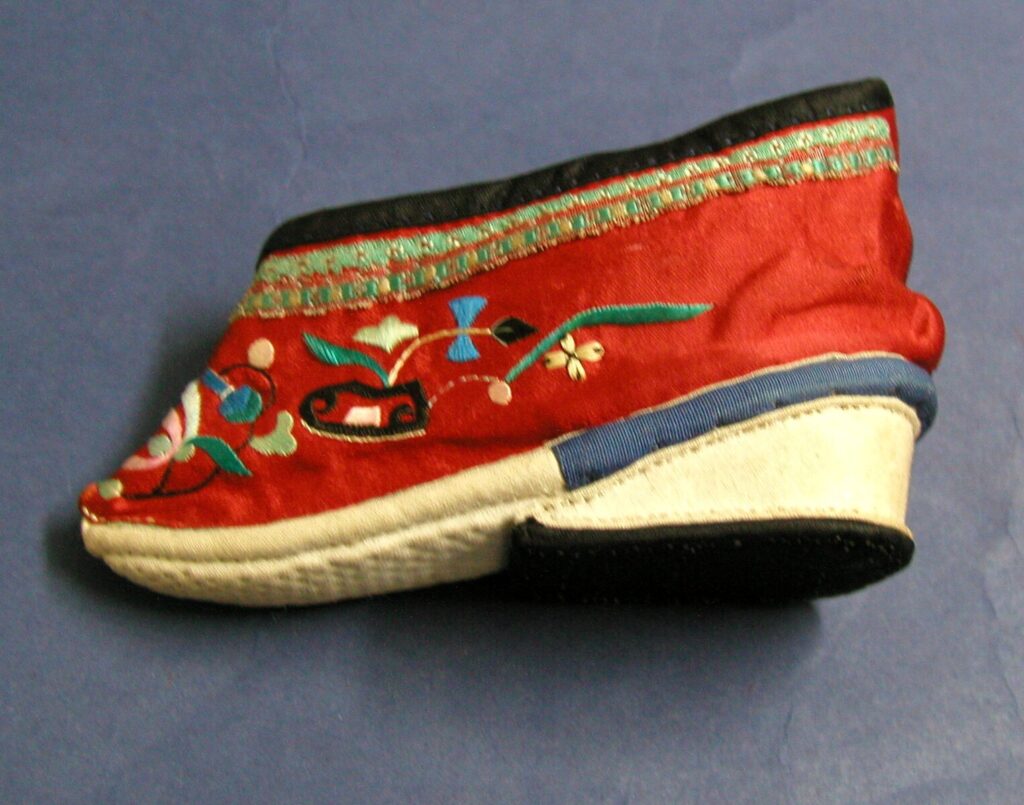
The History of Foot Binding
At one time, 40-60% of the female population in China had their feet bound, but now, only one woman may be left in the entire world with bound “lotus” feet.
This woman, 93-year-old Sun Cho Ngo Chu, had her feet bound at just seven years old. Sun Cho Ngo Chu is the last living foot-binding survivor, and the practice was heavily out of favor when she had the procedure done.
Here is a brief timeline of the history of foot binding:
- Pre-10th Century
- While no concrete evidence of foot binding existed before the 10th century, one story of Southern Qi Emperor Xiao Baojuan mentions “lotus feet” in reference to the dancing of his concubine Pan Yunu.
- 10th Century
- Yao Niang performed her dance for Emperor Li Yu. Her feet were bound in silk, and she danced upon a lotus–this is the origin of the idea of lotus feet.
- Song Dynasty
- The elite class in China began to consider bound feet a sign of feminine beauty. More and more women started to bind their feet.
- 13th Century
- Women in lower classes begin to bind their feet.
- 14-17th Century
- Foot binding becomes a social norm. Between 40-50% of Chinese women were binding their feet at this time.
- 19th Century
- Influence from Western missionaries and educational reform begin to push back against the practice of foot binding.
- 20th Century
- Along with educational reform and Western missionaries, the feminist movement begins to take hold, and foot binding is condemned. The Republic of China worked to outlaw foot binding by 1912, but some rural areas continued the practice. Towards the end of the 20th century, foot binding would nearly fade away completely.
- 21st Century
- Foot binding is irradicated completely, but a few elderly women remain who still have bound feet from when they were children.
The Decline of Foot Binding
Despite foot binding becoming deeply ingrained in Chinese culture, the practice would eventually disappear starting in the 19th century. Political changes were sweeping the country, and with it, changes in the societal view of gender equality.
Feminists, Western Christian missionaries, and women’s advocates began to work to abolish foot binding. By the late 20th century, the custom would be extinct.
The Chinese government outlawed the practice. They told citizens that foot binding was a form of oppression and that the country as a whole would be stronger when foot binding was a thing of the past.
The change in beauty standards also played a part in making foot binding disappear. While a bound foot in a lotus shoe looked strange, a bare foot that had undergone foot binding was disturbing to behold. Women with normal feet became the standard for beauty, and foot binding was viewed as archaic.
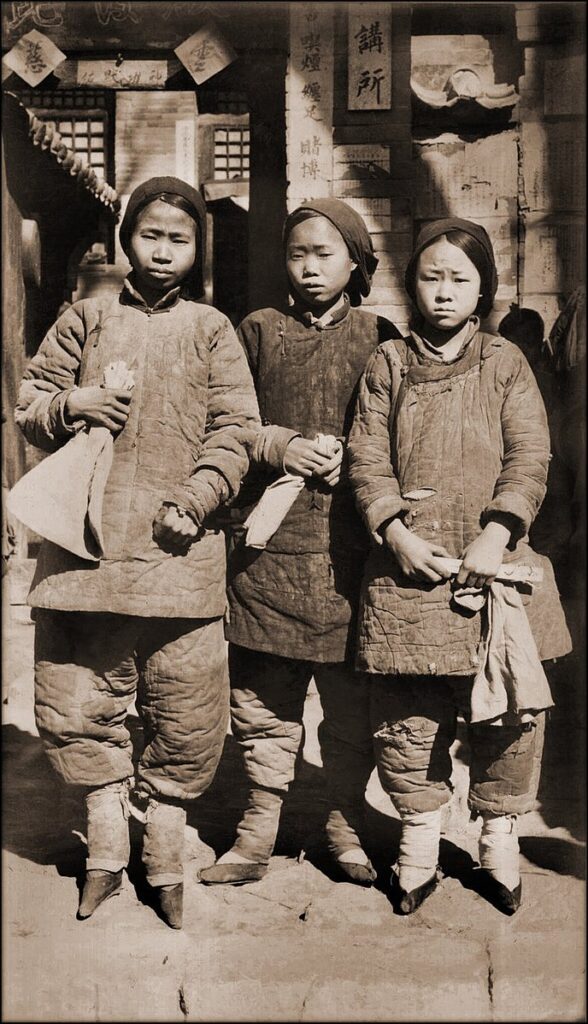
Does Foot Binding Still Exist?
After foot binding was outlawed in 1912, it persisted in isolated pockets in the most rural parts of China. The last reported foot binding was in 1957, and the last factory to produce lotus shoes, the Zhiqian Shoe Factory, would finally close in 1999.
Today, the practice of foot binding is extinct.
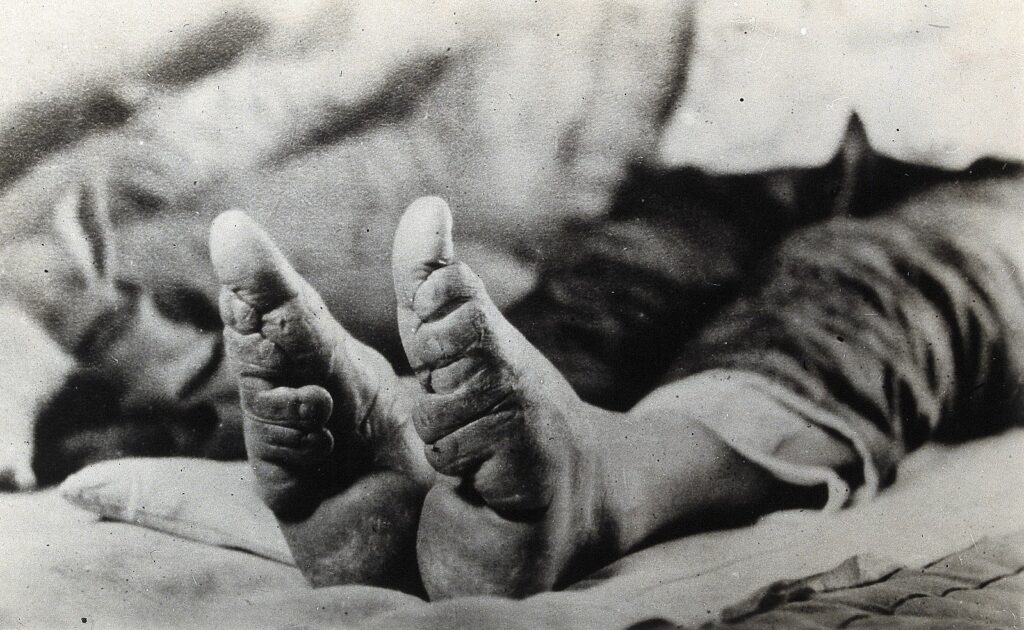
Can Foot Binding Be Undone?
Foot binding cannot be reversed, but bound feet can be unbound and recover somewhat over time. Because of how intense the process of foot binding is, there is no reversing all of the broken bones and skeletal changes once the bound foot has begun to heal into the triangular “lotus” shape.
When foot binding became illegal, women who removed their wrappings found it was almost as painful as when the feet were bound initially. So once a girl had her feet bound, there was no going back. Her feet could be unbound, but they would never be the same.
References
“Survivor of ancient Chinese practice of foot binding shares her story”- Nancy Loo
“Humans of China: “I Got Used to it but the Pain Stayed for Eight Years”-Cameron Hack
https://www.thebeijinger.com/blog/2020/03/01/humans-china-i-got-used-it-pain-stayed-eight-years
“Bound Feet, Young Hands: Tracking the Demise of Footbinding in Village China”-Laurel Bossen and Hill Gates
https://www.sup.org/books/extra/?id=27024&i=Excerpt%20from%20Chapter%20One.html

